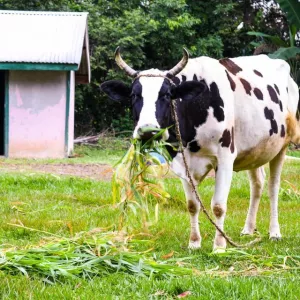Adaptation mechanisms for Derisking access to finance for Dairy Farmers
To address these issues and unlock financial opportunities, the Alliance and Financial Access Consulting Services (FACS), have embarked on an initiative in Kenya under the Climate Resilience and Livestock and Climate Initiatives to investigate key adaptation strategies that can de-risk the dairy farming sector and improve access to finance for smallholders. This review is a crucial component of a broader

Adaptation mechanisms for Derisking access to finance for Dairy Farmers
To address these issues and unlock financial opportunities, the Alliance and Financial Access Consulting Services (FACS), have embarked on an initiative in Kenya under the Climate Resilience and Livestock and Climate Initiatives to investigate key adaptation strategies that can de-risk the dairy farming sector and improve access to finance for smallholders. This review is a crucial component of a broader objective: the development of a climate “conscious” credit risk scoring system for smallholder financing.
One impactful adaptation strategy identified involves implementing cooling techniques for dairy animals. These techniques aim to reduce the heat load on animals during hot afternoons by providing roof and shading structures. Shading, in particular, has proven effective, reducing the total heat load by up to 50%. Cows provided with cooling exhibit higher milk yields, increased dry matter intake, and improved respiration rates. Cooling methods are not only efficient but also economical, making them suitable for smallholder farmers.
Another strategy involves breeding more heat-tolerant dairy cattle breeds. Local breeds that have adapted to the region’s climatic stressors can be reinforced through crossbreeding with heat and disease-tolerant breeds. These crossbred animals exhibit enhanced productivity and resilience. While exotic breeds often offer higher productivity, they are more vulnerable to adverse climate conditions. The choice between breeding for resilience and higher production levels must consider local context and available resources.
Proper water and feed storage practices are essential to mitigate the adverse effects of drought. Storing water reserves ensures continuous water supply for livestock, even during dry spells. Additionally, the strategic storage of high-quality feed and fodder provides a reliable food source for animals. Fodder conservation practices such as silage pits, hay bales, tube silages, and maize stover stores should be explored. Farmers must also adopt feeding concentrates, legume forages, and improved pasture management.

